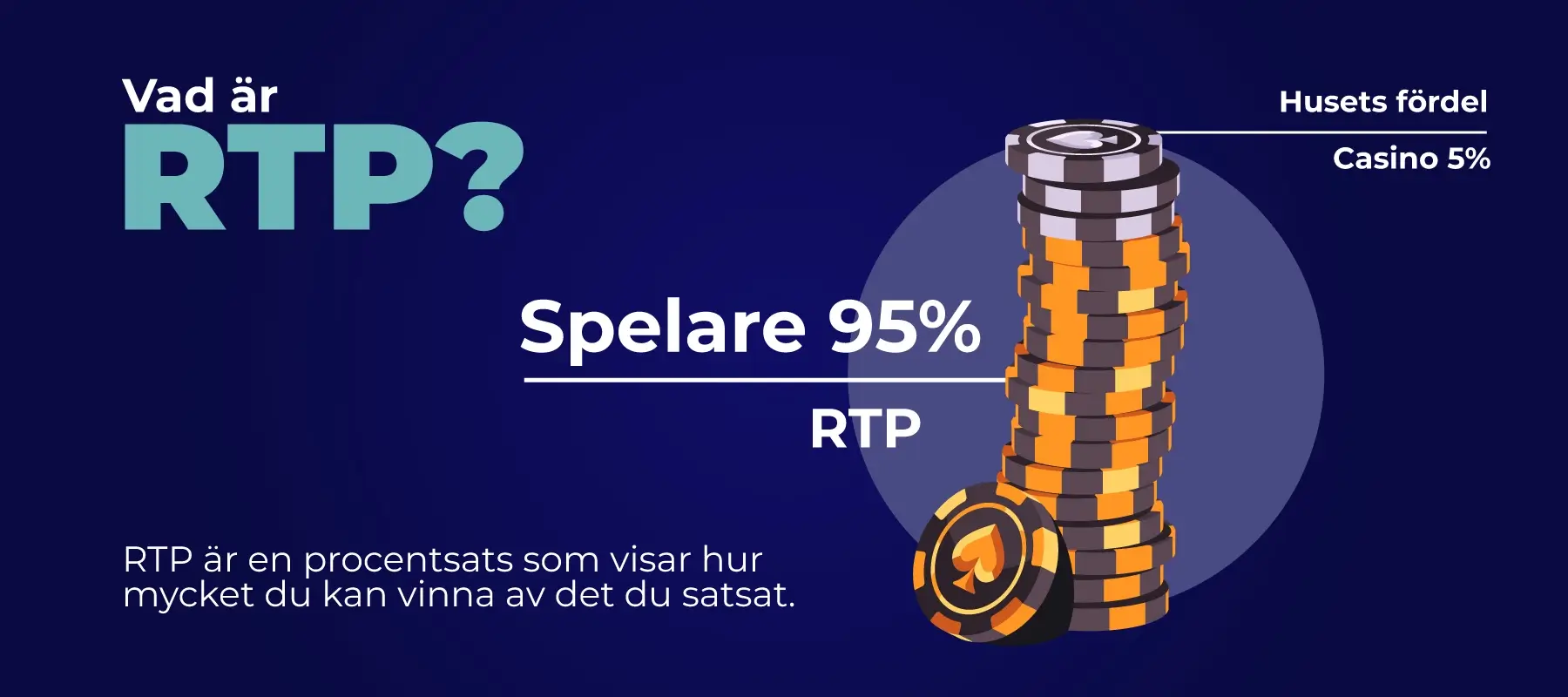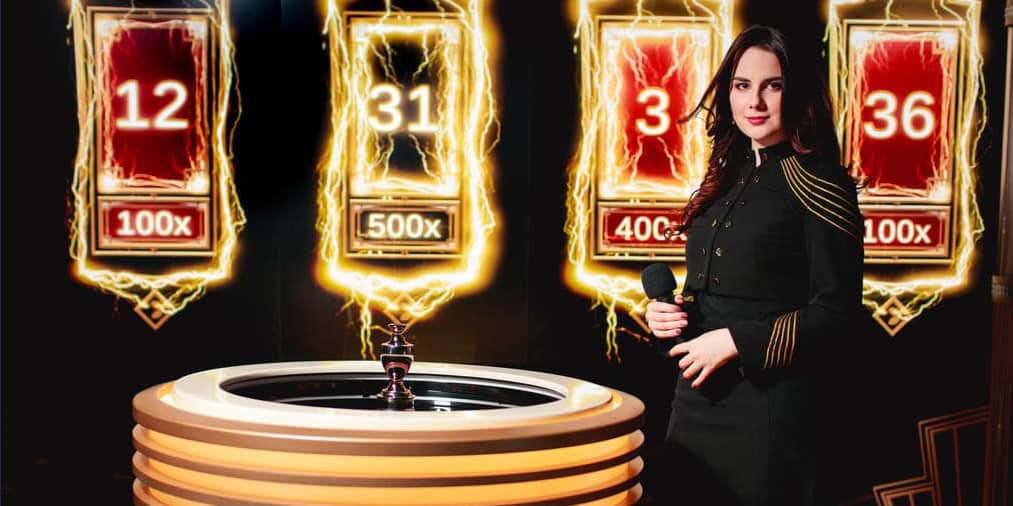WillBet365 Sports Betting-The world's favourite online sports betting company
Varmt välkommen till Casinogringos.se – din kompletta guide för casino på nätet. Denna sidan skapades i syfte att ge dig all information du kan tänkas behöva när det kommer till nätcasinon med svensk licens. Här hittar du bonusar, freespins, recensioner och jämförelser av de bästa online casino där ute, allt för att göra ditt val enklare.
Allt vårt innehåll genomgår en noggrann och detaljerad process för att säkerställa att all information vi publicerar stämmer och är tillförlitlig. Varje artikel, guide och recension granskas av våra casinoexperter med lång erfarenhet. Vi arbetar opartiskt och utan påverkan från externa parter, vilket gör att vi kan erbjuda objektiva bedömningar och rekommendationer som våra läsare kan lita på. Vi strävar efter att hålla en hög standard för att ge den mest transparenta och uppdaterade informationen inom området.
Bästa casinon på nätet 2025
Alla casinon är licenserade och granskade av våra experter












WillBet365 Sports Betting-The world's favourite online sports betting company
Vi på Casinogringos har skrivit utförliga guider för att du enkelt ska få all information om bonusar, regler, olika spelstrategier och mycket mer. Med hjälp av dessa kommer du att bli en mer komplett casinospelare.

Olika typer av odds hos bettingsidor
Det finns flera olika sätt att presentera odds hos bettingsidor och de tre vanligaste är europeiska (decimalodds), brittiska (bråkodds) och amerikanska (plus/minus-odds). Även om formaten…

Vanliga problem med casino bonusar
Nedan har vi samlat de vanligaste problemen som brukar uppstå med bonusar samt hur man kan lösa det. Om din bonus inte aktiverades kan det…

Casinospel med högst vinstchans – Så maximerar du dina odds
När man väljer casinospel är det många som undrar vilket spel som ger bäst vinstchanser. Svaret ligger ofta i en viktig faktor i form av…
WillBet365 Sports Betting-The world's favourite online sports betting company
Här hittar du de vanligaste frågorna och svaren gällande casinon på nätet.
- Hitta rätt casino på nätet med Casinogringos
- Fyra enkla steg för att spela casino på nätet
- Månadens bästa casino: Kungaslottet Casino
- Hur funkar casino på nätet?
- Hur vi betygsätter ett nätcasino
- Bästa nätcasino 2025
- Spelutbud hos casino på nätet
- Casino bonusar och välkomsterbjudanden
- Betalningsmetoder
- Olika typer av casino på nätet
- Nya regler för casinon på nätet
- Varför du kan lita på oss
Hitta rätt casino på nätet med Casinogringos
Vi startade Casinogringos.se med ett enda syfte, att underlätta valet för dig som vill spela casino på nätet. Det finns idag mängder av spelbolag och jämförelsesajter där ute, tyvärr har många av dessa gammal och felaktig information. Eftersom vi själva är väldigt spelintresserade ville vi skapa en modern plattform där spelare snabbt och enkelt kan få uppdaterad information och hjälp för att hitta bra casino online.

Våga testa nya casinon med vår hjälp
Att spela på ett casino som är nytt för dig kan kännas främmande och det kan kännas läskigt att dela med sig av sina personuppgifter och betalningsuppgifter. Därför har vi sållat ut de dåliga casinona från våra topplistor. Vi har fortfarande kvar recensionerna för att på ett transparent sätt kunna visa vad det är som är så dåligt med just det casinot.
Vi rekommenderar bara säkra casinon där vi vet att dina uppgifter är i trygga händer. Alla casinon här har svensk licens, är garanterat trygga och har skattefria vinster. Vi handplockar de bästa casinona på marknaden genom noggranna tester och utvärderingar, så att du kan spela tryggt.
Vi har även ett hjälpverktyg kallat casinohjälpen där du enkelt svarar på några frågor och får en lista på utvalda casinon som matchar dina kriterier.
Kom igång på bara någon minut
Det går idag väldigt snabbt och smidigt att komma igång och spela på ett svenskt nätcasino. Allt du behöver är en dator, mobil eller surfplatta och en internetuppkoppling. Följ våra tre steg som du hittar nedan för att börja spela casino redan idag!
När du väljer att spela på ett svenskt casino sker registreringen med BankID och tar bara någon minut.
Idag erbjuder alla svenska casinon lösningen med BankID vilket innebär att du slipper långa registreringsprocesser och skicka in dokument. Dessutom är det väldigt tryggt och säkert att spela med BankID.
Skattefria vinster hos casinon med svensk licens
Alla casinon som har en svensk spellicens erbjuder skattefria vinster. Detta är självklart en otroligt viktig sak att tänka på då du slipper betala skatt om du skulle vinna en större summa. Casinogringos listar endast nätcasinon som innehar svensk spellicens. Detta innebär att du alltid kan känna dig trygg och säker om du skulle välja ett casino från vår sajt.

Spelar du hos ett casino utan svensk licens som bedriver sin verksamhet utanför EU kan det innebära att du blir tvungen att betala skatt på dina vinster. Vill du läsa mer om för- och nackdelar när det kommer till internationella casinon har vi en sektion om casino utan svensk licens.
En bra kundsupport är viktigt
Att supporten är lättillgänglig så att du snabbt kan få hjälp om du har några frågor eller funderingar är självklart väldigt viktigt. Ett bra casino skall ha en kunnig support med svensktalande personal tillgänglig helst dygnet runt.
De bästa casinona idag har fler olika alternativ där du kan komma i kontakt med dem så som live chat, e-mail eller telefon. Live chat som de flesta online casinon på nätet erbjuder idag rekommenderar vi, då det oftast går snabbast.
Dessutom erbjuder de bästa casinon på nätet även utförliga FAQ sektioner på sajten. Här kan man få svar på vanliga frågor och funderingar som rör t.ex. bonusar, insättningar och utbetalningar.
Det ska vara säkert för dig som spelare
Något vi tycker är oerhört viktigt innan du väljer att spela på ett nätcasino är att det ska vara ett tryggt och säkert alternativ. Tack vare att alla svenska casinon på nätet idag sköter registrering med BankID kan du som kund känna dig trygg och säker på att dina personliga uppgifter är i säkert förvar.
När du verifierar dig hos ett online casino i Sverige med BankId sker detta över en säker förbindelse med din webbläsare.
Vi listar endast casinon med svensk spellicens så väljer du ett alternativ från oss kan du vara säker på att din information är i trygga händer.
Bästa online casino: Topp 5
| Rank | Casino | Bonus | Spela | Regler |
|---|---|---|---|---|
| 1 | Speedy Casino | 1000 kr välkomstbonus | Till casinot | 18+ | Spela ansvarfullt | stodlinjen.se | spelpaus.se | Omsättningskrav: 20x | Endast nya spelare | Regler och villkor gäller |
| 2 | Betinia | 100% bonus upp till 2500 kr | Till casinot | 18+ | Spela ansvarfullt | stodlinjen.se | spelpaus.se | Omsättningskrav: 35x | Endast nya spelare | Regler och villkor gäller |
| 3 | Frank & Fred | Ny licens och design | Till casinot | 21+ | Spela ansvarsfullt | Stödlinjen.se | Spelpaus.se | Regler och villkor gäller |
| 4 | WillBet365 Sports Betting-The world's favourite online sports betting companyKungaslottet Casino | 20 000 kr bonus + 150 freespins | Till casinot | 18+ | Spela ansvarfullt | stodlinjen.se | spelpaus.se | Omsättningskrav: 250x | Endast nya spelare | Regler och villkor gäller |
| 5 | x3000 | 1500 kr casino bonus eller 1000 kr betting bonus | Till casinot | 18+ | Spela ansvarfullt | stodlinjen.se | spelpaus.se | Omsättningskrav: 30x | Endast nya spelare | Regler och villkor gäller |
Fyra enkla steg för att spela casino på nätet
Tid som behövs: 5 minuter
Att komma igång och spela på ett nätcasino är idag väldigt enkelt. Följ dessa fyra stegen för att komma igång:
- 1. Hitta och välj ett nätcasino
Innan du kan börja spela på ett nätcasino behöver du hitta ett casino som passar dina preferenser. Du hittar alla nätcasinon i vår uppdaterade topplista ovan.

- 2. Registrera dig på casinot
När du valt ett casino och navigerat till sidan är det dags att registrera sig, det gör du idag genom att identifiera dig med ditt personliga BankID eller Freja eID.

- 3. Gör en insättning och verifiera transaktionen
Nu är det dags att välja hur mycket du vill spela för. Skriv in beloppet i fältet och välj den insättningsmetod du vill använda dig av. Verifiera sedan transaktionen med ditt personliga BankID eller Freja eID.

- 4. Börja spela
När du verifierat transaktionen tar det endast någon minut innan pengarna du valt att spela för är insatta på ditt spelkonto och du kan börja spela.

Månadens bästa casino: Kungaslottet Casino

WillBet365 Sports Betting-The world's favourite online sports betting company
20 000 kr bonus + 150 free spinsKungaslottet är det nya casinot från skaparna av Videoslots och Mr Vegas. Online casinot har således ett imponerande utbud av casinospel och marknadens största välkomstbonus med 20 000 kronor i kontant bonus. Dessutom erbjuder casinot 150 free spins utan omsättningskrav.
WillBet365 Sports Betting-The world's favourite online sports betting companyTill Kungaslottet casinoHur funkar casino på nätet?
För att kunna spela casino på nätet krävs det att man registrerar sig och gör en insättning. När man har pengar på sitt spelkonto kan man ta del av spelutbudet som brukar bestå av slots och diverse bordsspel. Vissa casinon har även betting, bingo och poker.
- Registrering och säkerhet: För att börja spela på ett nätcasino måste du skapa ett konto. De flesta svenska casinon erbjuder en snabb och säker registrering via BankID, vilket gör processen smidig och trygg.
- Insättningar och uttag: När du har skapat ditt konto kan du sätta in pengar genom olika betalningsmetoder, som Swish, banköverföringar, kortbetalningar eller e-plånböcker. Uttag sker också via dessa metoder, ofta med snabba transaktioner.
- Spelutbud: Nätcasinon erbjuder ett stort utbud av spel, inklusive klassiska bordsspel som roulette och blackjack, slots och live casino där du kan spela mot riktiga dealers via videostreaming.
- Slumpgeneratorer (RNG): För att garantera rättvisa spel används en slumpmässig nummergenerator (RNG) som säkerställer att varje resultat i spelautomater och bordsspel är helt slumpmässigt och oberoende av tidigare spelomgångar.
- Bonusar: Nätcasinon lockar ofta nya spelare med bonusar. Dessa bonusar har dock vanligtvis omsättningskrav, som innebär att du måste spela för en viss summa innan du kan ta ut dina vinster.
- Ansvarsfullt spelande: Svenska nätcasinon är reglerade av Spelinspektionen och följer strikta regler för ansvarsfullt spelande. Spelare kan sätta gränser för sina insättningar, tidsbegränsningar och pausera sig själva via verktyg som Spelpaus.
Vilket online casino ska du välja?
Utbudet av svenska casino är idag väldigt stort och det finns en hel del att välja på. Det viktigaste är att du hittar det casinot som passar just dig. Alla är vi olika och föredrar olika saker, vissa föredrar slots medan andra vill spela live casino eller betta på sport.
I listan nedan går vi igenom olika faktorer som du bör tänka på innan du väljer att registrera ett konto hos ett nätcasino.
Fundera först på dessa faktorer:
- Gillar du casino eller sportsbetting?
- Brett utbud av spel?
- Enkla betalningslösningar?
- Snabba utbetalningar
- Förmånliga bonusar och välkomsterbjudanden?
- Har casinot omsättningskrav?

Hur vi betygsätter ett nätcasino
Vi gör alltid en helhetsbedömning när vi betygsätter ett nätcasino. Vi tittar på en rad faktorer för att bedöma hur bra casinot faktiskt är. Hos Casinogringos kan du alltid lita på att du får en helhetsbild av online casinot då våra experter går igenom allt från användarvänligheten till kundsupporten. Här kan du läsa mer om hur processen går till när vi betygsätter casinon.
Vad vi tittar på i vår bedömning:
- Säkerheten
- Spelutbudet
- Användarvänlighet
- Bonusar och välkomsterbjudanden
- Design
- Mobilanpassad hemsida?
- Har nätcasinot en app?
- Kundtjänsten
- Betalningslösningar
- Utbetalningstiden
Bästa nätcasino 2025
Det kan ibland vara svårt att veta vilket nätcasino man ska välja. Listan är lång men det är inte alla som håller lika hög standard. Vi finns här för att förhoppningsvis göra ditt val lite enklare, våra topplistor uppdateras ständigt för att kunna erbjuda dig det senaste på den svenska spelmarknaden.
Vi listar enbart nätcasinon vi tycker uppfyller våra hårt ställda krav. Väljer du ett casino från oss kan du känna dig säker på att det är ett bra alternativ och att det har en svensk spellicens.
Bästa casino på nätet:
- Speedy Casino - Grymt Pay N Play Casino
- Kungaslottet - Nytt online casino med 20K i bonus
- Pop Casino - Enormt spelutbud och snygg webbplats
- Quick Casino - Casino, sport och snabba uttag
- Happy Casino - Nytt Swish Casino med 50 free spins
- GoGo - Smidig registrering och 150 cash spins i bonus
- Betinia - Komplett spelbolag med odds och casino
- Lucky Days - Casino med 500 kr + 100 free spins

Spelutbud hos casino på nätet
Ett brett och omfattande spelutbud är något vi anser är väldigt viktigt för ett online casino att ha idag. Vi människor är olika och gillar olika saker, därför är det som ett nätcasino viktigt att kunna erbjuda olika typer av spel så att det finns något som tilltalar alla. Många svenska casino på nätet erbjuder idag även betting, live casino, bingo och lotto utöver den vanliga casino delen. Allt för att vi som spelar ska få en så stor valfrihet som möjligt.
Bästa nätcasino har idag över 2000 spel från flera olika spelleverantörer i olika kategorier. Spelutvecklarna blir allt bättre och spelen blir mer och mer avancerade.
En annan viktig del för dig som spelare är att du enkelt ska kunna navigera runt bland kategorierna på spelsajten och snabbt hitta vad du söker. Detta är något som skiljer de bästa nätcasinona från det breda utbudet av casinon på nätet som finns idag.
Senast tillagda spelautomater
Slots och RTP
Du har säkerligen kommit i kontakt med begreppet RTP om du tidigare spelat på slots. RTP är en förkortning för begreppet Return To Player och är en procentsats som kort och gott visar hur mycket du kan vinna av det du satsat.

Vid en RTP på 98% får du som spelare alltså tillbaka 98% av de pengarna du satsat. Ha dock i åtanke att RTPn baseras på en längre tidsperiod och inte bara på en spelrunda. RTP:en baseras på alla insatser som är gjorda på den specifika spelmaskinen eller slot:en. För att förklara det enkelt. Säg att det sätts in 100 000 kr på en slotmaskinen och spelet har 98% i RTP, då går alltså 98 000 kr tillbaks i form av vinster till spelarna.
Slots med hög RTP
Det är alltid bra att försöka välja slots med så hög RTP som möjligt då det ökar chansen att vinna. I listan nedan har vi samlat ihop fem slots med hög RTP.
| Slot | Speltillverkare | RTP |
|---|---|---|
| Moody Fruits | Relax Gaming | 99.91% |
| Ugga Bugga | Playtech | 99.07% |
| Mega Joker | Netent | 99% |
| 1429 Uncharted Seas | Thunderkick | 98.60% |
| Jack Hammer 2 | Netent | 97.1% |
Live casino
Live casino är en av de trender som är populärast hos svenska casino på internet idag. Det finns en rad olika spel där du har möjlighet att spela mot en riktigt live dealer. Dessutom känns det nästan som att du befinner dig på ett riktigt landbaserat casino men du spelar istället hemifrån soffan.
Du streamar allt i realtid och kan spela bland annat de populära spelen baccarat, roulette, blackjack och poker. Något annat som är väldigt populärt idag är game shows som Evolution Gaming har tagit fram. Game shows finns även i form av live slots som Gonzo's Treasure Hunt Live.
Spela mot riktiga live dealers
Den stora skillnaden på ett live casino spel om du jämför med ett vanligt casinospel är att du spelar mot en live dealer. Dessutom har du möjlighet att kommunicera med live dealern under spelets gång.

Casino bonusar och välkomsterbjudanden
När du registrerar ett spelkonto hos ett nätcasino får du oftast en casino bonus direkt vid registreringen. Detta gör casinot för att du skall registrera dig och prova just deras casino.
Något som är väldigt populärt är välkomstbonus helt utan omsättningskrav. Det innebär att du kan ta ut din vinst direkt om du vinner.
Bäst casinobonusar just nu
| Rank | Casino | Bonus | Spela | Regler |
|---|---|---|---|---|
| 1 | Speedy Casino | 1000 kr välkomstbonus | Till casinot | 18+ | Spela ansvarfullt | stodlinjen.se | spelpaus.se | Omsättningskrav: 20x | Endast nya spelare | Regler och villkor gäller |
| 2 | Betinia | 100% bonus upp till 2500 kr | Till casinot | 18+ | Spela ansvarfullt | stodlinjen.se | spelpaus.se | Omsättningskrav: 35x | Endast nya spelare | Regler och villkor gäller |
| 3 | Kungaslottet Casino | 20 000 kr bonus + 150 freespins | Till casinot | 18+ | Spela ansvarfullt | stodlinjen.se | spelpaus.se | Omsättningskrav: 250x | Endast nya spelare | Regler och villkor gäller |
| 4 | x3000 | 1500 kr casino bonus eller 1000 kr betting bonus | Till casinot | 18+ | Spela ansvarfullt | stodlinjen.se | spelpaus.se | Omsättningskrav: 30x | Endast nya spelare | Regler och villkor gäller |
| 5 | Coolbet | 1500kr casinobonus eller 1000kr sportbonus | Till casinot | 18+ | Spela ansvarfullt | stodlinjen.se | spelpaus.se | Omsättningskrav: 40x | Endast nya spelare | Regler och villkor gäller |
Endast en bonus per licens
Sen den nya spellicensen i Sverige trädde i kraft får nätcasino endast erbjuda en bonus per licens per spelare. Du kan dock skapa konton hos flera svenska casino för att ta del av flera bonusar.
Glöm inte att kika om casinot har en helt egen licens eller ligger under en redan existerande svensk spellicens.
Exempel: Du vill ta del av bonusen hos Klirr Casino men har sedan tidigare ett konto på Frank & Fred där du tagit bonusen. Eftersom båda varumärkena ligger under samma licens kan du enligt lag inte få bonusen hos Klirr Casino.

Free spins hos svenska casino på nätet
Free spins är en annan typ av bonus. Här får man snurr på en specifik slot och till ett bestämt värde.
Det finns både vanliga free spins som kommer med ett omsättningskrav men även free spins utan omsättningskrav. Free spins utan omsättningskrav har blivit väldigt populärt då du kan ta ut dina vinster direkt utan att behöva omsätta dem först.
Betalningsmetoder
När det kommer till säkerhet och utbud av betalningsmetoder ligger svenska casinon verkligen i framkant.
Hos svenska nätcasinon finns det en rad olika alternativ att välja mellan och vi skulle säga att bra betalningsmetoder är en väldigt viktig faktor för att avgöra hur bra casinot är.
Det viktigaste enligt oss är att det ska gå snabbt och enkelt för dig som spelare att ta ut eller sätta in pengar.
Som vi tidigare nämnt är det väldigt säkert att göra transaktioner hos ett casino med svensk spellicens då all känslig information är krypterad.
Det är inte speciellt viktigt att ett casino erbjuder många betalningsmetoder så länge de erbjuder de som faktiskt är bäst. De populäraste betalningsmetoderna med snabba uttag som du ska hålla utkik för är enligt oss Trustly, Zimpler och Swish. Alla dessa betalningslösningar är väldigt populära och gör så att du oftast har pengarna på kontot inom bara några minuter.
Swish - bara på svenska casinon
Swish är en betalningsmetod som är unik för svenska casinon. Olicensierade casinon får inte erbjuda varken insättningar eller uttag med metoden. Swish är den uttagsmetod på casino som går allra snabbast, och i de flesta fall kommer pengarna in på kontot direkt eller på bara några sekunder när man spelar casino med Swish. Detta är den bästa betalningsmetoden enligt oss.

Så gör du en insättning
När du har valt det casinot du vill spela på är det dags att göra din första insättning. Det är verkligen busenkelt att göra en insättning hos online casinon idag. Allt du behöver göra är att följa dessa steg:
- Klicka på knappen "Gör insättning"
- Välj det belopp du vill spela för
- Välj betalningsmetod
- Verifiera dig med din E-legitimation
- Börja spela!
Olika typer av casino på nätet
Det finns en del olika typer av nätcasino och alla har sina för- och nackdelar. Konkurrensen är stenhård och casinona jobbar stenhårt för att förbättra sina produkter i hopp om att kunna locka till sig en bredare publik.
Casinon utan registrering eller konto
Idag är det mest populära alternativet i Sverige att spela casino utan registrering. För några år sedan var du som spelare tvungen att lämna ut dina personuppgifter och adress i samband med registreringen hos ett online casino. Detta var väldigt tidskrävande och gjorde att det kunde ta flera minuter innan spelare kunde komma igång och faktiskt börja spela. Samt att man behövde skicka in en massa dokument till casinot innan du kunde plocka ut dina vinster. Den krångliga processen slipper du idag tack vare den smidiga verifieringsmetoden via BankID.
Bästa casino utan registrering och konto

WillBet365 Sports Betting-The world's favourite online sports betting company
1000 kr i välkomstbonusSpeedy Casino är vår favorit vad gäller casino utan konto. Här hittas snabba utbetalningar, stort spelutbud och en trevlig spelglädje sedan 2018. Nya kunder kan ta emot en välkomstbonus på 1000 kronor.
WillBet365 Sports Betting-The world's favourite online sports betting companyTill Speedy CasinoNya casinon
Vi testspelar och rankar alltid utifrån våra kriterier. Därmed kan du enkelt och smidigt se vad de nya casinona erbjuder i form av bonusar, välkomsterbjudande och omsättningskrav. När du valt vad som passar just dig är det bara ett klick vidare och du kan snabbt och enkelt ta del av casinots välkomsterbjudande. Vi kontrollerar alltid att det nya casinot har svensk licens, är tryggt och säkert, erbjuder enkla och snabba betalningslösningar samt att det har en bra och lättillgänglig kundtjänst.
Bästa nya casino

WillBet365 Sports Betting-The world's favourite online sports betting company
20 000 kronor + 150 free spinsDet nya casinot Kungaslottet lanserades 2024 och här erbjuds ett enormt spelutbud, kundservice 24/7 och många olika betalningsmetoder. Här väntar snabba uttag med Trustly och Zimpler.
WillBet365 Sports Betting-The world's favourite online sports betting companyTill KungaslottetVår sida är helt fristående och vi jobbar ständigt med att hålla den uppdaterad med nya erbjudanden och bonusar.
Fördelen för dig som väljer ett nytt casino är att de flesta spelbolagen erbjuder dig en generös välkomstbonus som ny spelare.
Spela casino online enkelt via mobilen
Att spela casino online via mobilen är idag inget ovanligt alls och nya nätcasinon utgår nästan alltid från att optimera användarvänligheten i mobilen först. Mobilanvändandet har exploderat de senaste 10 åren och nuförtiden kan du sköta det mesta från mobilen. Nya casinon på nätet utgår alltid från att göra en så bra mobilversion som möjligt.
Vissa casinon erbjuder även en casinoapp för att vara ännu mer mobilanpassade. I appen brukar man kunna logga in med faceID och få en mer anpassar upplevelse.

Nya regler för casinon på nätet
Från den 1:e januari 2019 är man tvungen att erhålla svensk licens för att bedriva en verksamhet om spel i Sverige. Dessa licenser utfärdas av spelinspektionen som är en svensk myndighet som kontrollerar så allt går rätt till.
För dig som spelare blir det ingen större skillnad med ett nytt licenssystem. Med tanke på att man måste ha en svensk spellicens för att vara verksam i Sverige försvinner de oseriösa bolagen som inte följer regler och villkor. De nya reglerna har också gjort att spelbolagen behöver ta ett mycket större ansvar än innan när det gäller sunt spelande och spelberoende.
För att få en spellicens finns en rad med regler och justering man måste följa. Alla spelbolag som vill bedriva sin verksamhet i Sverige måste betala en fast kostnad för själva licensen och sen betalar man även en skatt på 18% av spelöverskottet till svenska staten. Detta är något som casinon utan svensk licens inte behöver göra. Du kan läsa mer om skillnaderna mellan ett casino med svensk licens och casino utan licens.
En tryggare miljö för dig som spelare
Du har säkert märkt att du behöver sätta dina egna spelgränser innan du kan komma igång och spela när du registrerar dig på ett svenskt nätcasino. Du behöver även fylla i ett maxbelopp för dag, vecka och månad. Sedan måste även spelbolaget erbjuda självavstängning och information om spelpaus.
Dessutom ska all kommunikation och marknadsföring vara enkel och tydlig att förstå men även finnas lättillgänglig att läsa. Detta gäller b.la regler, villkor och omsättningskrav.
Med det nya licenssystemet kan spelbolagen endast erbjuda spelare bonus en gång per licens. Så tar du del av en bonus på t.ex. Unibet innebär det att du inte kan ta del av fler bonusar från andra spelbolag som ingår i Kindred Group.
När det gäller vinsterna för dig som spelar casino online är reglerna fortfarande oförändrade och vinsterna är fortfarande helt skattefria.
För att sammanfatta det hela med den nya regleringen tror vi på Casinogringos.se att det blir en tryggare, säkrare och mer kontrollerad miljö för alla spelare framöver.
Casino med spelpaus
Spelpaus är ett verktyg framtaget av den svenska spelinspektionen för att minska osunt spelande. Du kan med hjälp av verktyget välja att stänga av dig från allt spel på nätet. En avstängning hos Spelpaus.se gäller allt registrerat spel hos de spelbolag som har licens att bedriva spel om pengar i Sverige. I skrivande stund är runt 88 500 personer avstängda via spelpaus. Av de som valt att registrera sig hos spelpaus är runt 75% män och 25% kvinnor.
Hos spelpaus kan du välja att stänga av dig i:
- 1 månad
- 3 månader
- 6 månader
- Tillsvidare
Väljer du 1, 3 eller 6 månader släpper spärren automatiskt efter att tiden gått ut. Väljer du däremot tillsvidare behöver du själv gå in och göra ett aktivt val för att häva spärren.
Registreringen sker enkelt på spelpaus hemsida med hjälp av ditt personliga BankID. Har du väl registrerat dig på sajten kan du inte häva spärren tidigare än vad du angett.
Varför du kan lita på oss
Efter många år i branschen är vi mer än kvalificerade att recensera och betygsätta casinon, samt ranka vilka casinon som är bäst. Vår ranking ser olika ut beroende på vad för typ av casino du söker. Vi har bland annat topplistor för casino utan konto, nya casinon, casino med roulette och de bästa casinobonusarna. Det finns inte ett casino som är bäst på alla punkter, utan det gäller att urskilja vad som är viktigt för dig som spelare och sen välja ett casino utifrån de kriterierna.
Vi bygger vår trovärdighet på expertis och ärlighet. Alla casinon som rekommenderas testas grundligt av vårt team utan påverkan från externa parter. Vi tar aldrig betalt för att ge casinon högre betyg. Vårt syfte är att erbjuda korrekt och uppdaterad information för att hjälpa dig göra smarta val när du spelar online.
Varje innehåll såsom recensioner, guider och nyheter granskas noga av minst två experter för att säkerställa kvalitet. Vi följer branschens riktlinjer noggrant för att garantera att all information är aktuell och pålitlig.
När du väljer ett casino från vår sida är du garanterad:
- Svensk licens
- Att casinot är säkert
- Att vi personligen har testat casinot och att det uppfyller våra krav
- Skattefria vinster
Hur vår casinoguide kan hjälpa dig
Det finns nästan 150 svenska casinon, så att som spelare testa alla för att kunna hitta det bästa casinot är nästintill omöjligt. Oavsett om du letar efter ett casino med snabba uttag eller den bästa casinobonusen kan du lita på att vi redan har gjort jobbet åt dig och att du enkelt kan välja från våra topplistor.
Vi har testat och samlat data från alla svenska casinon, för att kunna ranka dem i olika kategorier och på så sätt hjälpa dig att hitta det casinot som passar dig bäst. I våra listor finns bara bra casinon som är säkra att spela på och har en svensk licens, så du kan alltid känna dig trygg när du väljer casino från oss!
Vår casinoguide är den ultimata resursen för dig som vill få ut det mesta av din spelupplevelse. Oavsett om du är nybörjare eller en erfaren spelare hjälper vi dig. Vi erbjuder objektiva recensioner, tips om hur du spelar ansvarsfullt, strategier för olika spel och nyheter. Genom att använda vår casinoguide sparar du tid, undviker osäkra casinon och får all information du behöver för att göra informerade och trygga val.
Vårt mål
Vårt mål är kort och gott att du enkelt ska hitta det du söker efter inom casinots värld. Vare sig du letar efter det bästa casinot, de senaste casinonyheterna eller hur man spelar blackjack så finns något för dig.
Vi vill göra din spelupplevelse så enkel och trygg som möjligt genom att guida dig till säkra svenska casinon som vi vet är bra. Genom vår expertis och erfarenhet utbildar vi dig om allt från spelstrategier till ansvarsfullt spelande, vilket gör vår portal till en kombination av nöje och lärande.
Vi arbetar kontinuerligt med att analysera marknaden för att se vad spelare söker efter för att kunna hjälpa till i de frågorna. Sidan växer ständigt och uppdateras regelbundet.
Våra värderingar
Spel om pengar är ett känsligt ämne, och vi som driver en sida om ämnet har otroligt stort ansvar att se till så att vi på ett tryggt och roligt sätt kan rekommendera de bästa sajterna och spelen utan att främja spelande.
Våra värderingar bygger på trygghet, transparens och ansvar. Vi samarbetar aldrig med casinon utan svensk licens, vilket innebär att vi endast rekommenderar säkra och reglerade alternativ som följer svensk lagstiftning. Vår sida är utformad för att vara en pålitlig källa för information, utan uppmaningar eller påtryckningar till spelande.
Vi strävar efter att ge opartiska och ärliga recensioner, baserade på noggranna tester och analyser, så att du som spelare kan göra välgrundade val. Vi tar ansvarsfullt spelande på största allvar och erbjuder tydliga länkar till stödresurser som Stödlinjen och Spelpaus för att hjälpa dem som behöver det.
Spela alltid ansvarsfullt
Ansvarsfullt spelande är en väldigt viktig del för dig som spelar hos svenska casino på nätet. Det ska vara kul och underhållande att spela och inte övergå till ett tvångsmässigt beteende.
Ett tips är att du sätter en spelbudget varje månad som är balanserad till din inkomst, och det är viktigt att du håller dig till denna. Spela aldrig för mer pengar än du har råd att förlora.
Känner du att du spelar för mycket och behöver hjälp ber vi dig ta en titt på sidan om att spela ansvarsfullt. Det finns också ett flertal hjälporganisationer som du kan ta kontakt med som WillBet365 Sports Betting-The world's favourite online sports betting companystodlinjen.se.
Glad och sprallig tjej som för tillfället är bosatt i Uppsala. Brinner för all typ av spel på nätet och har över fem års erfarenhet inom spelbranschen. Skriver allt från recensioner till nyheter och älskar att testa nya casinospel.
Uppdaterad:
Faktakontrollerad av: Natalie Heljestrand







